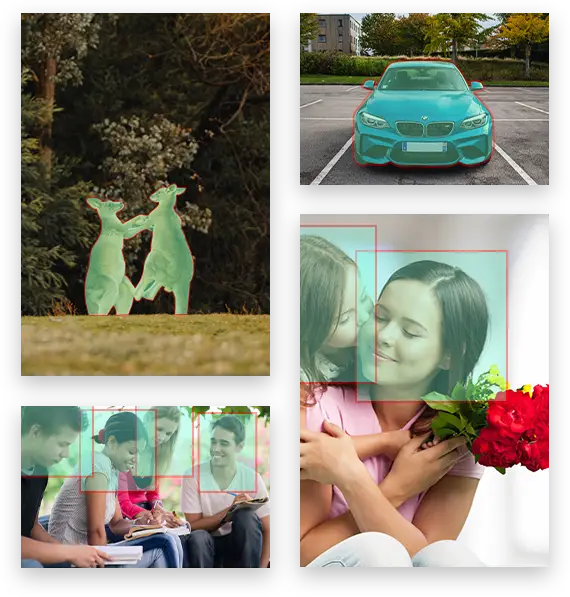Image annotation lays the foundation behind many successful Artificial Intelligence (AI) and Machine Learning (ML) applications we interact with in our daily lives—from unlocking our phones via biometric identification such as facial detection, iris recognition, or fingerprint detection to autonomous vehicles, drone photography, and so on. It is also one of the most important processes in Computer Vision (CV).
Image Annotation Process
Image annotation is the process of adding tags or metadata to the input datasets to be fed into the Machine Learning systems. These labels help the algorithm to learn and identify the characteristics of the data you want it to recognize. Further, these tagged images are used to train the Computer Vision based models to identify those characteristics when presented with raw, unlabeled data.
For instance, think of the time when you were a child. You learned what a dog was at some point in time. After seeing many dogs, you gradually understood the different breeds of dogs and how it was different from a pig or a cat. In the same way, computers need ample examples to learn how to categorize things in their environment.
Image labeling provides these examples in a way that is easily comprehensible to computers. The increased availability of visual data for companies pursuing AI has led to an exponential growth in the number of projects relying on image labeling. And, creating an efficient image annotation process has become critical for organizations working within this area.
Image Annotation Techniques
To help the Computer Vision based models learn and grow, datasets must be labeled. There are various image labeling techniques used by data annotators to prepare enhanced training sets. Some of these techniques are listed here. Take a look:
- 2D Bounding Boxes
Bounding boxes are one of the most used annotation techniques in Computer Vision. As the name suggests, bounding boxes are rectangular boxes drawn around the object of interest used to define its location. The annotators use the 𝑥-axis and 𝑦 axis coordinates to determine the location of the target object. This technique is generally used for object detection as well as localization tasks.
- Polygonal Segmentation
You must be agreeing that objects are not always rectangular in shape. On this note, polygonal segmentation is another type of data labeling technique where rectangles are replaced by complex polygons to define the shape and location of the target object in a much more effective and precise way.
- Semantic Segmentation
Also known as pixel-wise annotation, every pixel in the image is assigned a class in the semantic segmentation process—these classes could be cars, busses, pedestrians, roads, sidewalks, etc., and each pixel carries semantic meaning.
This technique is primarily used in the environmental context. For example, semantic segmentation is used in robotics and self-driving cars because it is important for the Computer Vision based models to understand the environment in, which they are operating.
- 3D Cuboids
3D cuboids are almost similar to 2D bounding boxes; the only difference is the additional depth information of the target object. Thus, 3D cuboids help you get a 3D representation of the object of interest, allowing Machine Learning systems to distinguish features such as position and volume in a 3D space.
A common use-case of the 3D cuboid annotation technique is seen in autonomous vehicles where it can use the additional depth information of the target object to measure its distance from the car.
- Key-Point & Landmark
In the landmark and key-point annotation technique, dotted lines are drawn across the image. This is used to detect small objects and shape variations such as facial expressions, features, emotions, human body parts, poses, etc.
- Lines & Splines
As the name suggests, lines and splines image annotation techniques are created using lines and are commonly used in self-driving cars for lane detection and recognition.
These were the top 6 image annotation techniques. However, adding labels to each pixel is a significant undertaking. Any errors or inaccuracies in the process might deviate from the desired outcomes. Therefore, a smarter move is to engage in professional image labeling services to get enhanced training datasets.
Final Words
You might be wondering about the outsourced image labeling services cost; however, the collaboration pays off totally. The professionals have the potential in terms of a competent pool of data annotators, the latest software, proprietary tools, a time-tested blend of manual workflows, flexible delivery models, and so on—everything that is required to label images accurately. Having the right blend of skills and experience ensures excellence in all the image labeling outcomes. Hence, you get accurately labeled datasets within the stipulated time and budget.
0






